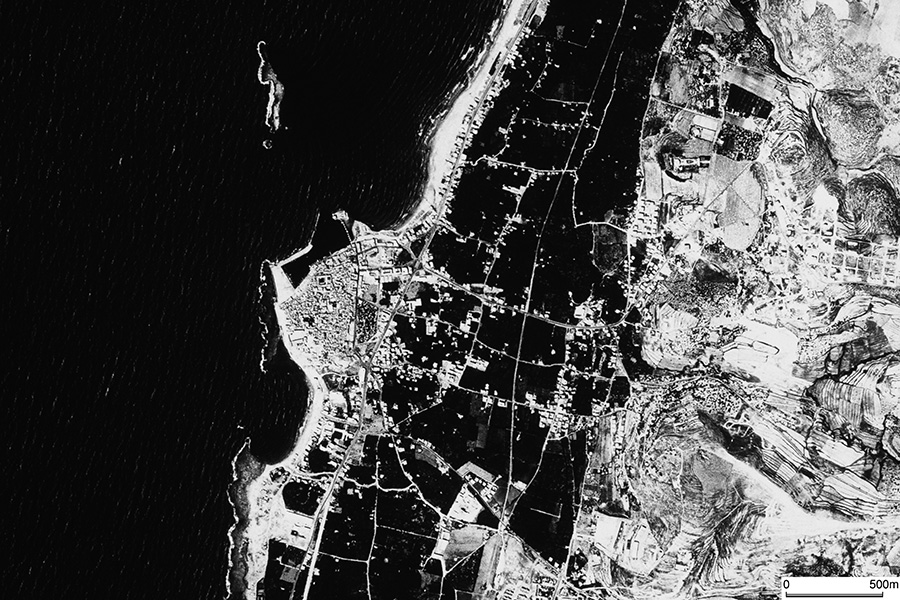
 |
| CORONA satellite photograph over Sidon taken on June 17, 1967. |
Then the son of Peleus straightway set forth other prizes for fleetness of foot: a mixing-bowl of silver, richly-wrought; six measures it held, and in beauty it was far the goodliest in all the earth, seeing that Sidonians, well skilled in deft handiwork, had wrought it cunningly, and men of the Phoenicians brought it over the murky deep, and landed it in harbour, and gave it as a gift to Thoas; and as a ransom for Lycaon, son of Priam, Jason’s son Euneos gave it to the warrior Patroclus. — The Iliad, 23.740
In the Iliad, Sidonians are described not only as active maritime traders but also excellent artisans manufacturing silver products and so on. Ancient Sidon was an oval-shaped hill projecting into the Mediterranean, and had two harbors in the north and south. These harbors were protected by reefs running parallel to the coast as if they were breakwaters. Eshmun Temple, Sidonian's focus of faith, was situated 3.8 kilometers northeast from the city.
CORONA satellite photographs are available from U. S. Geological Survey, EROS Data Center, Sioux Falls, SD, USA.